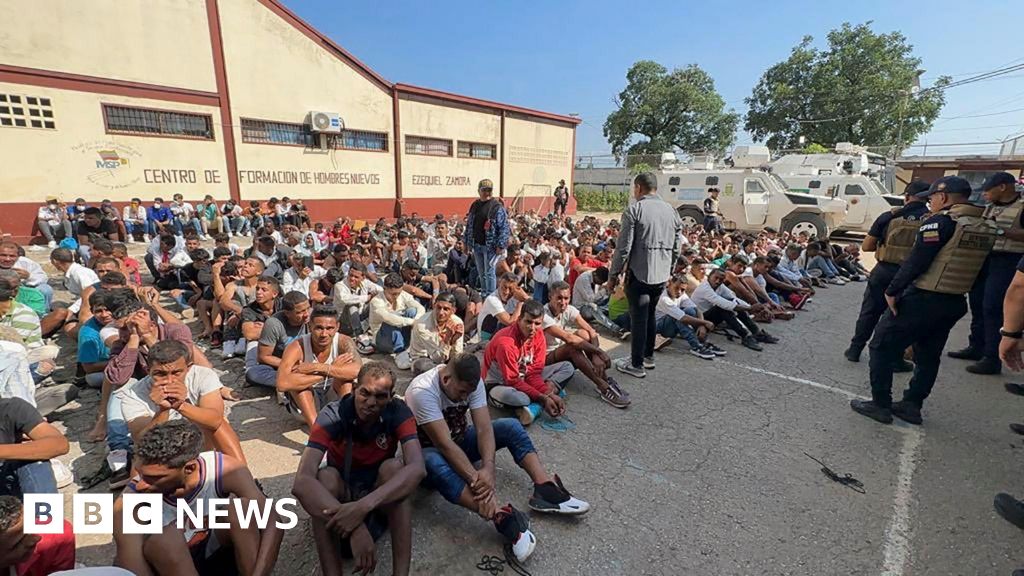Monday, April 21, 2025 | 2 a.m.
Editor’s note: The Sun is launching a new feature called “Behind the News“ that will take significant events and provide readers with Sun staff research as well as a digest of existing news stories — with full source links for readers to explore more. “Behind the News“ is the product of Sun staff assisted by the Sun’s AI lab, which includes a variety of tools such as Anthropic’s Claude, Perplexity AI, Google Gemini and ChatGPT.
Despite making up a small percentage of the total athletic body, transgender athletes in the U.S. have become a focus of increased scrutiny under President Donald Trump’s new administration. On Wednesday, Trump sued Maine for not complying with the U.S. government’s push to ban trans athletes in girls’ and women’s sports.
The Education Department announced less than 24 hours after the order’s signing that it was investigating San Jose State University, the University of Pennsylvania and the Massachusetts Interscholastic Athletic Association, all of which have had Title IX violations reported against them for allowing transgender athletes to compete.
Here’s an examination of what the government’s fight over trans athletes is about, how it grew into an issue with national interest and how it has compoundedthe stigmas trans people have long faced.
The numbers: A small minority
The number of transgender athletes in American sports is extremely small relative to the overall athletic population. At the collegiate level, NCAA President Charlie Baker testified before Congress in December that he was aware of “fewer than 10 transgender athletes currently competing in college sports out of more than 510,000 NCAA student-athletes” [7, 8, 9, 10, 11]. Some independent estimates suggest the number could be slightly higher — perhaps as many as 40 known transgender athletes across all NCAA divisions — but the NCAA’s official position maintains that the number is in the single digits [12].
Controversy in the MWC
One of the most publicized recent conflicts occurred in the Mountain West Conference during the 2024 volleyball season. The controversy centered around a transgender woman on San Jose State University’s women’s volleyball team who had been on the roster for three seasons after transferring from another college [13].
Several other teams in the conference — including Boise State, Wyoming, Utah State and Nevada — refused to compete against the Spartans, citing concerns over fairness and safety. These teams forfeited matches, giving San Jose State six wins by forfeit and sparking a series of legal and public disputes [13, 14].
Legal challenges soon followed. A group of current and former Mountain West players, led by San Jose State co-captain Brooke Slusser, filed a lawsuit in federal court seeking to declare the transgender player ineligible for the conference tournament, vacate San Jose State’s forfeit wins, and challenge the conference’s policy on transgender participation. The lawsuit argued that the player’s participation violated Title IX and created an unfair and unsafe environment [13].
The Mountain West Conference had adopted a transgender athlete participation policy in 2022, allowing athletes to compete if they met NCAA eligibility standards, including documented testosterone suppression for transgender women. This policy was challenged in court, with some schools arguing it violated Title IX and principles of fairness [16, 15].
When challenged in court, a federal judge in Colorado denied the emergency request to bar the transgender player from the conference tournament, noting that the request was filed too late and lacked merit. The judge highlighted that the player had been on the team for years without incident and that the controversy only arose after her identity became public [19].
The controversy drew national attention, with some lawmakers and advocacy groups using the case to argue for or against transgender inclusion in women’s sports. The season ended with San Jose State losing the conference final to Colorado State, and the controversy underscored broader national debates about transgender rights and fairness in women’s sports [13].
Barriers faced by trans athletes
Social and environmental obstacles
Transgender women encounter numerous obstacles when seeking to participate in sports:
• Stigma and discrimination: Trans athletes often face suspicion, exclusion and hostility from peers, coaches and the public. The fear of being outed or targeted discourages participation, especially in team sports where gendered spaces like locker rooms can be particularly challenging [1, 2].
• Lack of inclusive environments: Many sports organizations and teams lack policies or facilities that support trans inclusion, leading to feelings of isolation and invalidation of gender identity [1, 2].
• Media and public scrutiny: High-profile cases have led to intense media attention and public debate, often casting trans athletes as threats to fairness in women’s sports, regardless of the actual number of trans participants [4].
Testing and verification hurdles
Transgender women athletes are often subjected to invasive procedures to verify eligibility:
• Hormone testing: Under most policies, trans women must provide regular documentation of testosterone levels, which can be stressful and stigmatizing [20].
• Public doubt and accusations: Even cisgender women have been subjected to investigation or forced to undergo testing if their performance or appearance is questioned, further fueling a climate of suspicion, New York Times columnist Ruth Padawer wrote[5].
Policy evolution and current landscape
Olympic standards
• Pre-2021: The International Olympic Committee previously used testosterone level as the sole parameter to divide male and female sporting divisions, and required transgender women to maintain testosterone levels below 10 nanomoles per liter (nmol/L) for at least 12 months before competition [8, 9, 10, 11].
• 2021 onward: The IOC released a new nonbinding framework, moving away from universal testosterone limits and urging each sport to set its own evidence-based, inclusive policies. The framework emphasizes fairness, nondiscrimination and respect for human rights [12, 11, 13].
NCAA sports
• Pre-2022: The NCAA required trans women to complete one year of testosterone suppression therapy before competing on women’s teams, with no specific testosterone level mandated [7].
• 2022-2024: The NCAA introduced more frequent testosterone testing (at the start of the season, six months in and before championships) [7].
• 2025 (post-Trump): Following an executive order by Trump, the NCAA now bans transgender women from competing in women’s sports, restricting eligibility to those assigned female at birth [14].
Advocacy response
Trans advocates and organizations are actively working to:
• Challenge exclusionary policies: Groups like Athlete Ally, the National Center for Transgender Equality and others lobby against blanket bans and for evidence-based, inclusive policies [17, 18].
• Promote research and education: Advocates highlight the lack of scientific consensus on trans women’s alleged advantages and call for more nuanced policy-making [1, 2].
• Support affected athletes: Advocacy groups provide legal, mental health and peer support for trans athletes facing discrimination or exclusion [17, 18].
• Raise awareness: Campaigns emphasize that trans athletes are not dominating women’s sports and that the real threats to women’s sports include issues like unequal pay, sexual harassment and lack of resources — not trans inclusion [3, 17, 18].
While international organizations like the International Olympic Committee have begun shifting toward more individualized, inclusive approaches for its separation of men’s and women’s competitions, U.S. collegiate sports have moved in the opposite direction. The U.S. government’s moves by attempting to end trans women’s access to sports add another layer of adversity to the challenges these athletes were already facing.
Sources
[1]https://pmc.ncbi.nlm.nih.gov/articles/PMC8316721/
[2]https://www.transresearch.org.au/posts/trans-women-in-sport
[3]https://www.thecrimson.com/article/2024/4/16/editorial-obstacles-trans-womens-sports/
[6]https://en.wikipedia.org/wiki/Sex_verification_in_sports
[8]https://pmc.ncbi.nlm.nih.gov/articles/PMC9331831/
[9]https://www.ebsco.com/research-starters/sports-and-leisure/transgender-athletes-overview
[11]https://www.si.com/olympics/2022/03/23/transgender-athletes-testosterone-policies-ioc-framework
[12]https://www.olympics.com/ioc/human-rights/fairness-inclusion-nondiscrimination
[13]https://www.latimes.com/sports/story/2024-12-02/san-jose-state-volleyball-transgender-player
[15]https://www.bbc.com/news/articles/cvgezz0k3mno
[17]https://www.athleteally.org
[18]https://transequality.org/news/national-center-transgender-equality-responds-harmful-naia-ruling
[20]https://journals.sagepub.com/doi/10.1177/09646639221086595
.png)








 English (US) ·
English (US) ·